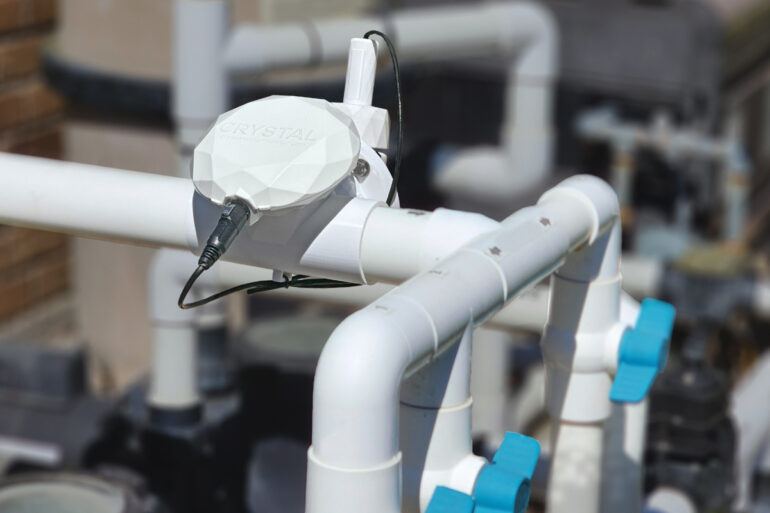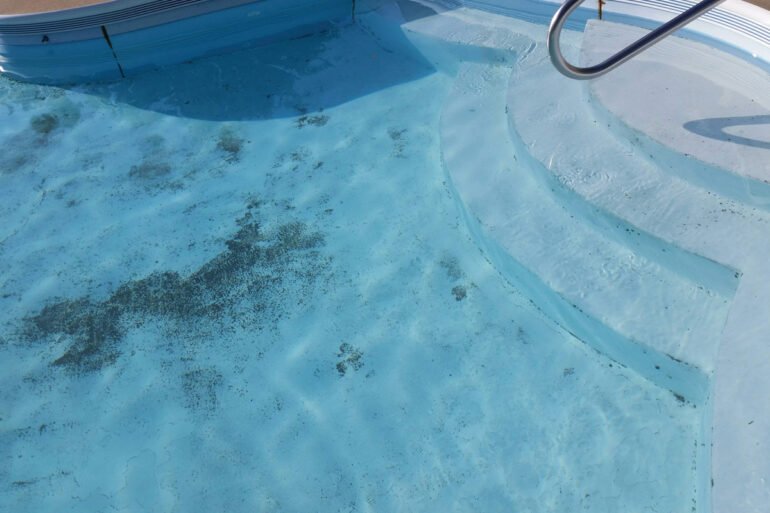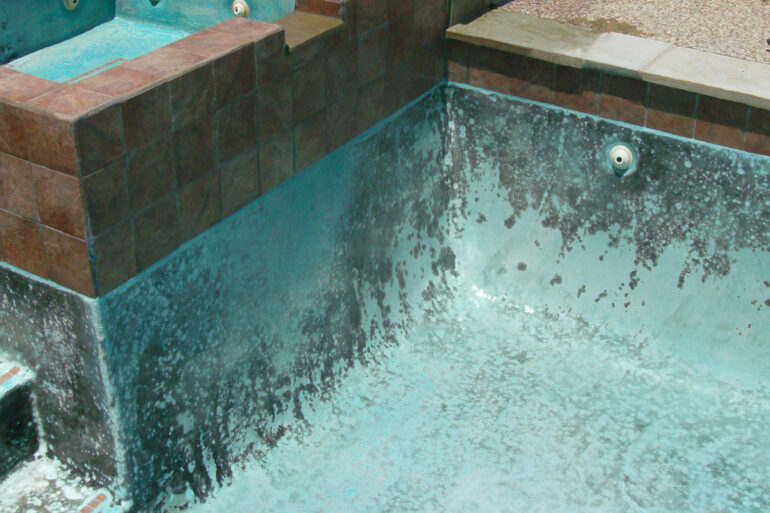Start It Up
Testing fill water among the most important pool startup procedures

Swimming pools are not one-size-fits-all when it comes to design, and most certainly not when it comes to their care. The structure, mechanisms and sanitizing systems all contribute to determining the best water care method, and many industry veterans agree the care of a pool hinges on one crucial stage: The startup.
“Proper pool startups are the key to final product delivery of every interior finish, especially in gunite/concrete swimming pools,” says Scott Nichols, regional sales manager for EasyCare Products, manufacturer of water care products in Fresno, California. “Many variables are present during each pool startup from source water to site location to weather conditions. Identifying these variables and adjusting to them accordingly is always the largest portion of a successful swimming pool startup.”
Good Hydrations
In the ’80s, the pool industry began seeing problems with pool finishes, etching and deterioration of cement finishes, says Jack Beane, president of Jack’s Magic, a pool care product manufacturer in Largo, Florida. “I had friends who were plasterers who weren’t getting paid for their jobs because there were defects that were being created in the finishes,” he says, referencing startup problems, like not adding calcium, as the cause.
“There is an active chemical reaction when the water is added to the cement and aggregate, no matter the application,” says Jana Auringer, quality control technician for Pebble Technology, a National Plasterers Council board member and instructor of NPC startup certification classes. “After troweling, this reaction slowly continues for the next 28 days. In a water environment, the plaster curing phase is altered as the water is trying to seek its own balance. In order for the surface to cure properly, the water must be balanced during those 28 days.”
Kent Westfall, in charge of initial water treatment for Alan Smith Pools, a pool construction company in Orange, California, calls this process ‘hydration’ and says it can last 12 to 13 months.
“In the very beginning of this hydration process, the finish is susceptible to many issues that can shorten the life expectancy and ruin the aesthetics of the finish,” Westfall says. “How the pool is filled, what type of fill water is used, the handling of the plaster dust, whether a sequestering agent is used and the balancing of the water chemistry all play a very important part in startups.”
Startup water chemistry will impact any pool surface. “The water doesn’t know the vessel it’s being put in, so it’s going to react the same way regardless of what the finish is,” Beane says. “If you fill a vinyl pool with low calcium, the water will draw plasticizers out of the vinyl, which makes it wrinkle and brittle. The water’s going to get what it needs from the easiest source.”
Fill-Water
Auringer doesn’t believe in one specific way to do every pool startup.
“The water that is used to fill the pool will dictate the method,” she says. “The NPC startup method is a basic direction that can be used in most situations, but not all fill water is equal and there can be situations that the method should be altered.”
These alternatives, she says, are taught in the NPC Startup Certification course, offered throughout the year in several different locations, as well as at the upcoming NPC Annual Conference beginning Feb. 12, 2020, in Houston. Brent Lane of Artistry in Mosaics, a pool tile manufacturer in Fort Pierce, Florida, also recommends referencing the National Spa & Pool Institute guidelines on startup chemistry.
Since the startup method depends so much upon the fill water, then that should be the first thing builders and servicers examine.
“When the pool’s sold, the salesman ought to be grabbing a sample of the water that they’re going to fill the pool with and test it,” Beane says, adding that it’s not necessary to test for 20 parameters, but a simple test of total hardness won’t do either. His recommendation: Test calcium hardness, free and total chlorine, pH and total alkalinity.
Auringer says the No. 1 error she sees in pool startup procedures is a lack of or inaccurate water testing. “I am not referring to any one test kit, but to the accuracy of the person performing the water test,” she says. “Education in proper water testing technique is the best prevention and most test kit manufacturers offer that support.”
Westfall concurs that testing the fill water is the first, and most important, step for proper startup. “Low calcium fill is one of the biggest issues I encounter when I do [pool startup] inspections,” he says. “This is exactly why testing the fill water is so important.”
Overlooked Blunders
With variable startup methods, a few points remain constant (like testing the fill water). Westfall says using a brush vac for the first 30 days is a must. Nichols warns that letting a freshly filled pool sit without any action for more than 12 to 24 hours is a common mistake, usually centered around poor planning and convenience.
Lane sees a few common errors, such as adding chlorine too early to provide “nice sparkling water to make homeowners happy, but with possible grave detriment to the surface,” he says. “Stopping the continuous flow of water until the pool is filled to above the pool finish will cause water ring.” He also reiterates the need to test fill water before adding it to a newly plastered pool and advocates for the use of high-quality sequestering agents.
Lane also warns that startup procedures, no matter the source, can be followed perfectly but that doesn’t mean perfect results. “[These procedures] represent an average of what has worked best for the majority and do not guarantee you will not experience common plaster phenomenon such as staining, mottling, efflorescence and scale. Common sense, experience and good testing procedures must be followed.”
Westfall advises pool pros to remember startup procedures continue to evolve. “As with anything, there are many opinions on what is the best way to complete a startup,” he says. “I feel that the NPC has done the research and has a huge membership base from which to pull information and experiences.”
For Beane, it boils down to pool pros making startup a priority. “What I’ve tried to teach is to improve your quality of life,” he says. “Do the startup correctly and your phone isn’t ringing Friday night. That’s how you don’t have to go back to a pool every day for a month and troubleshoot issues. Save yourself that nightmare.”
“It is a common misconception that, when the plastering crew throws the hose in the pool and drives away, the job is complete. Many consumers don’t realize that it takes 28 days for a pool plaster to cure. And even fewer know the cementitious pool plaster only reaches about 75% of its strength after seven days of curing. We find by sharing these two simple facts, it helps consumers understand the vulnerability of the plaster during the curing process and the importance of the additional startup work required to protect their investment.”
Philip Greggs
research and development technical services director
Southern Grouts & Mortars
Pompano Beach, Florida
Startup Procedures
Courtesy of Southern Grouts & Mortars
- After the finish is exposed, let it air dry for a few hours or until the next morning.
- Pre-filter the water and use a sequestering agent
to eliminate stain-causing contaminants. - Start the circulation system as soon as possible using the main drain line. Do not start the system until the water level is above the return inlets. Circulate the pool continuously for the first three days.
- On the first day, test and record chlorine, pH, total alkalinity, calcium hardness and temperature levels. Adjust pH to 7.2 to 7.4 and the Total Alkalinity to 100ppm. Dissolve all chemicals in water first and allow sufficient time for each chemical to be fully dispersed before adding others. Do not add chlorine.
- Brush the entire surface twice each day for the first three days. Clean the filter as needed.
- On the second day, repeat steps four and five above.
- On the third day, adjust all the chemistry to the following levels: Free Chlorine: 1.0 to 3.0 ppm; pH: 7.4 to 7.6; Total Alkalinity 80 – 120 ppm; Calcium Hardness: 200 – 400 ppm; Stabilizer: 40 to 80 ppm
- Adjust the pump timer to normal operating hours.
- Do not install automatic pool cleaners for 28 days.
- Do not vacuum the pool with a wheeled vacuum for 14 days to avoid leaving wheel marks. Brush-type vacuums may be used immediately.
- Brush pool walls and floor daily for the first two weeks.






